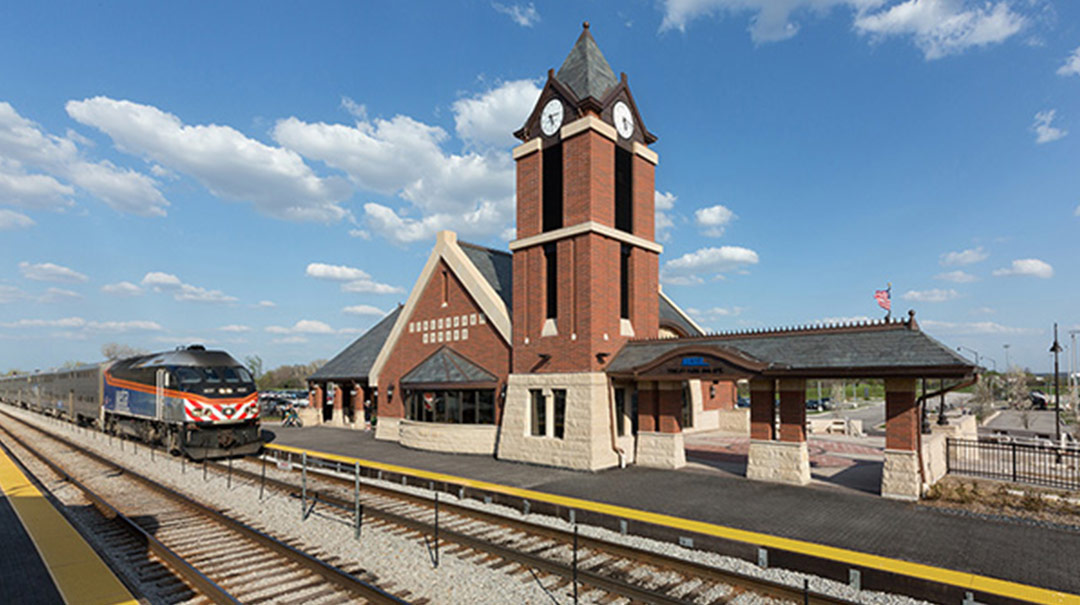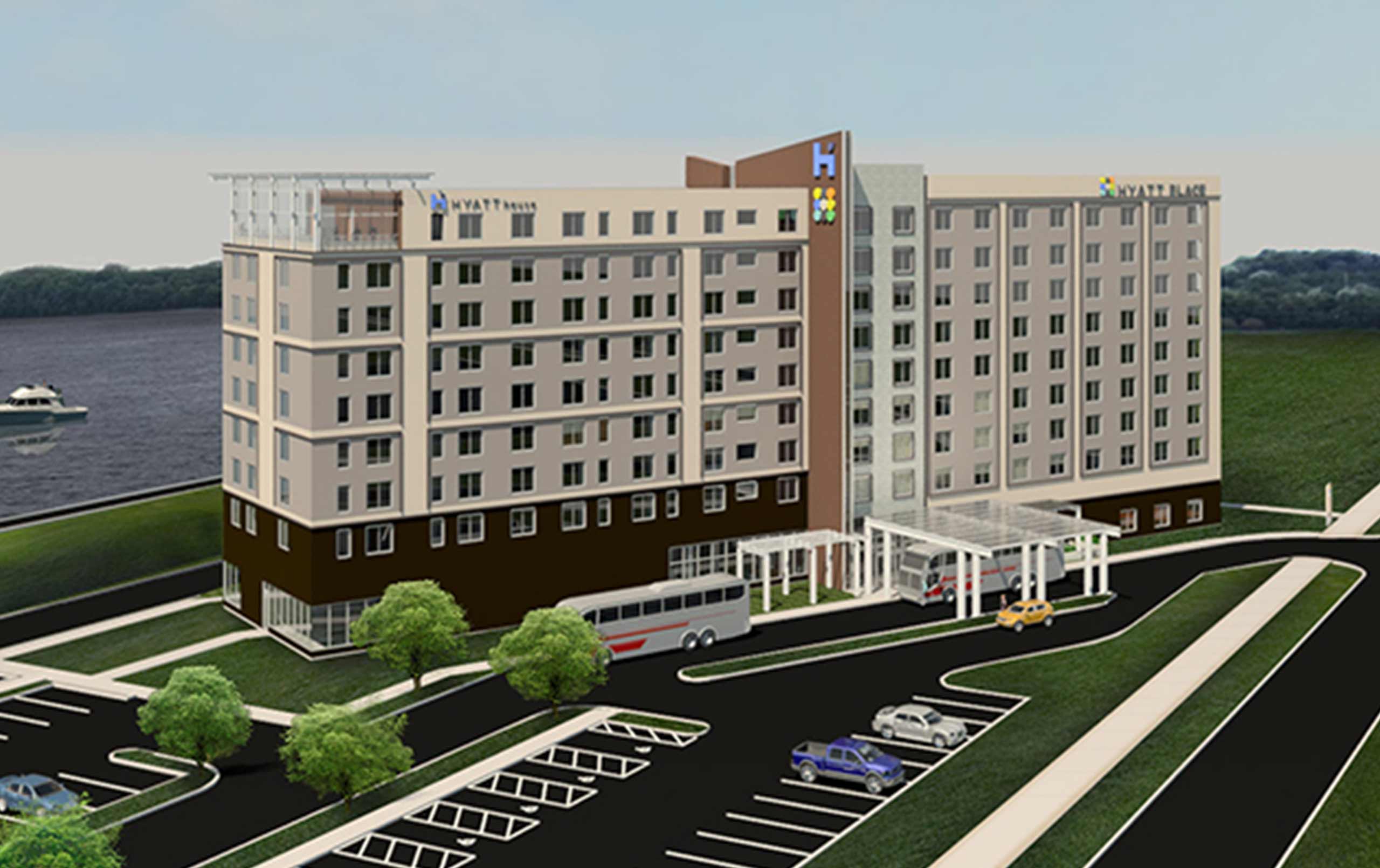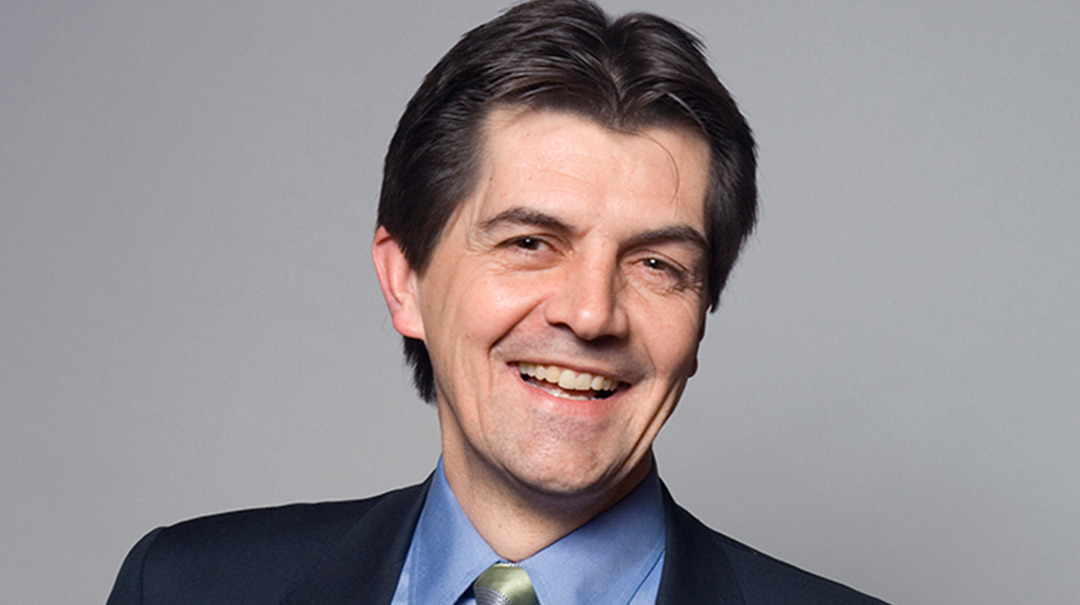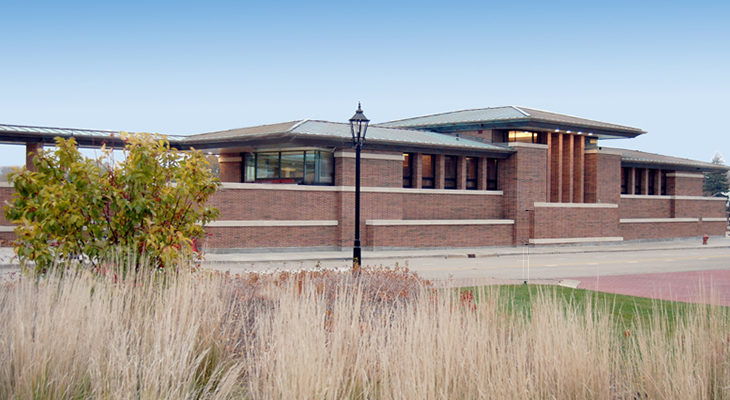
A humble statement from a not-so-humble guy: Prairie-style architecture echoes the “quiet level” of the Midwestern landscape
Richard Lloyd Jones, publisher of The Tulsa Tribune, was furious: the roof of his new home, called Westhope, had started leaking. Jones called his cousin Frank Lloyd Wright, the architect who had designed Westhope, to complain that water was leaking onto his desk.
Wright replied, “Richard, why don’t you move your desk?”
Jones’s wife Georgia was a bit more forgiving. “This is what we get for leaving a work of art out in the rain,” she said.
Despite this story (and many others that testify to Wright’s arrogance), America’s most renowned architect achieved fame for a humble architectural style that came to be known as “Prairie.” Wright believed that Midwestern architecture should “accentuate” the prairie’s “natural beauty” and “quiet level.” Thus, Prairie-style buildings pay tribute to the flat landscapes that surround them.
The style, characterized by its modest, yet strong appearance, became popular in the late nineteenth and early twentieth centuries. The Midwest offers many examples of this style, which communities continue to embrace, and architects continue to draw from.

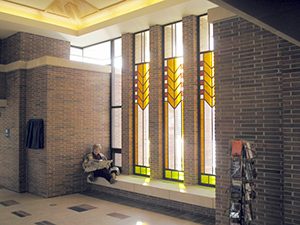
Soaring Down to Earth
Wright was intent on the destruction of the box. Thus, the Prairie style relies on low, horizontal lines and low-pitched roofs with overhanging eaves to create a flattening effect. Undecorated natural materials (often brick) used in simple masses form the foundation of the architectural vocabulary.
Viewed head-on, Prairie-style facilities frequently have wings stretching from a central element, much like a bird in flight. The buildings also have rows of small windows that often incorporate art with natural themes. Although the design style is down to earth, it still soars as a strong architectural statement.
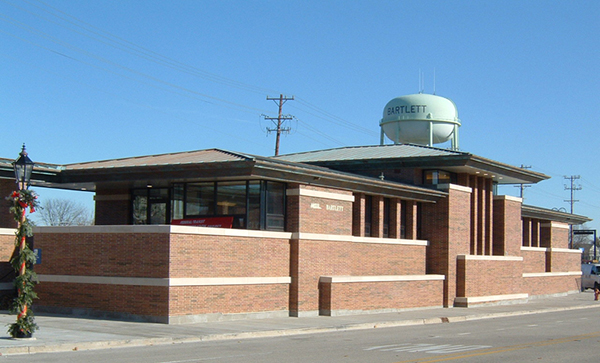
Small Footprint, Monumental Role
Fifteen years ago, the Village of Bartlett, Illinois set out to expand and revitalize its small downtown to strengthen its image as a thriving Chicago suburb. It ushered in a new mixed-use Town Center built with cultured stone and brick masonry.
Key to the renewal’s success was building a new train station on a small plot of land between the development and the tracks. The village challenge the Legat Architects team to give the building a sense of monumentality despite its mere 3,100 square feet.
The resulting station uses the Prairie style with Roman brick and limestone to complement the Town Center. Strong horizontal lines build up to a large central element. Vegetation planted in low-lying tiers connects the building and the landscape. Consequently, the station feels similar to a village hall or courthouse, even though it’s much smaller than these facility types.
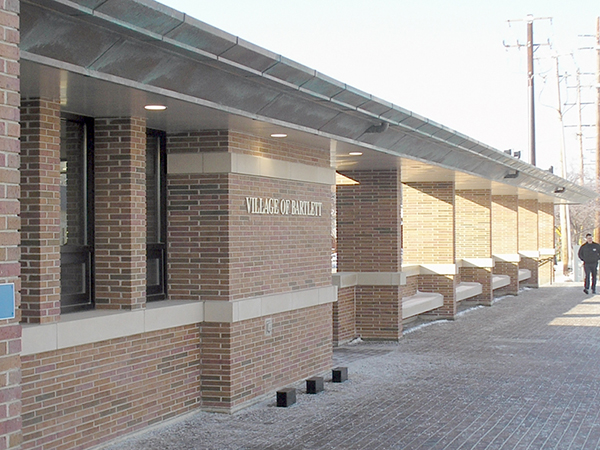
Prairie Design Vocabulary
- Undecorated natural materials
- Low, horizontal lines
- Low-pitched roofs
- Overhanging eaves
- Regular window rhythm
- Openness between inside and outside
What better way to end this piece than on a Wrightian note? “Early in life I had to choose between honest arrogance and hypocritical humility,” he said. “I chose the former and have seen no reason to change.”
Contact us to learn more about architectural styles or train station design, or read Ted’s other posts about transportation facilities:
- American Arts and Crafts Architecture
- Richardsonian Romanesque Architecture
- American Colonial Architecture
- A Lesson in Design Vocabularies
- Enriching the Civic Landscape
- Accessibility: Making the Grade with Universal Design
- Tough and Timeless Materials
- An Activity Node
- Safety Above All Else
- A Community Model
